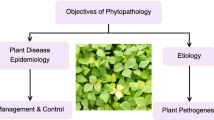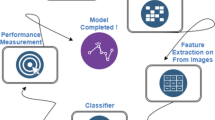Abstract
Vis/near infrared reflectance spectroscopy appears to be a rapid and convenient non-destructive technique that can measure the quality and compositional attributes of many substances. Principal component analysis (PCA), which offered a qualitative analysis of tobacco samples, was used to analyze the clustering of tobacco samples. A new method combined wavelet transform (WT) with Artificial Neural Network (ANN) was presented to establish a discrimination model. The model regarded the compressed spectra data as the input of ANN, and 80 samples were selected randomly as calibration collection whereas the remaining 20 were being prediction collection. High correlation coefficient (r=0.999) was achieved, which was better than PCA-SRA-ANN and PLS-ANN. It indicated that WT combined with ANN is an available method for variety discrimination based on the Vis/NIR spectroscopy technology. Some sensitive wave bands were also analyzed to develop tobacco varieties discrimination apparatus through PLS models.





Similar content being viewed by others
References
Le JM, Chen Y, Ding Y (2005) Guizhou Agric Sci 33(3):62–63
Ma X, Wang Y, Wen YD, Xie LH, Cui YH, Zhang J, Li HB (2004) Spectrosc Spectral Anal 24(4):444–446
Wang GQ, Wang F, Chen D, Su QD, Shao XG (2004) Spectrosc Spectral Anal 24(12):1540–1542
Lian WI, Wu MJ, Sun XJ, He ZH (2005) Tob Sci Technol 2:19–23
He ZH, Lian WL, Chen Y, Tang LY, Wu MJ (2005) Chin J Anal Lab 24(6):24–28
Lizuka K, Hasimoto H (1991) In: Proceedings of the 2nd International Conference, NIR Publications, Chichester, pp 249–258
Cheng J, Liu QS, Lu HQ, Chen YW (2006) Pattern Recognit 39(1):81–88
Seregely Z, Deak T, Bisztray GD (2004) Chemometr Intelligent Lab Syst 72(2):195–203
Tang YF, Zhang ZY, Fan GQ (2005) Spectrosc Spectr Anal 25(4):521–524
He Y, Li XL, Shao YN (2005) Lect Notes Artifi Intell 3809:1053–1056
Creaser CS, Davies AMC (1988) Analytical applications of spectroscopy. Royal Soc Chem London 403–480
Paul J, Gemperline J (1991) Anal Chem 66(20):197–198
Qi XM, Zhang LD, Du XL, Song ZJ, Zhang Y, Xu SY (2003) Spectrosc Spectral Anal 23(5):870–872
Qi XM, Zhang LD, Chai LN (1999) J Beijing Agric Coll 14(3):47–52
Tang YF, Zhang ZY, Fan GQ, Zhu HJ, Wang XQ (2005) Spectrosc Spectral Anal 25(5):715–718
Shao XG, Gu H, Cai WS, Pan ZX (1999) Spectrosc Spectral Anal 19(2):139–141
Lacher RC, Hruska SI, Kuncicky DC (1992) IEEE Trans Neural Netw 1(3):62–72
He Y, Zhang Y, Xiang LG (2005) Lect Notes Artif Intell 3789:712–720
Zhao C, Qu HB, Cheng YU (2004) Spectrosc Spectral Anal 24(1):50–53
Xu YQ, Sun SQ, Yuan ZM, Bai Y (2002) Chin J Anal Chem 30(10):1231–1233
Sun SQ, Tang JM, Yuan ZM, Bai Y (2003) Spectrosc Spectral Anal 23(2):258–261
Tang YF, Zhang ZY, Fan GQ (2004) Spectrosc Spectral Anal 24(11):1348–1351
Acknowledgements
This study was supported by the Teaching and Research Award Program for Outstanding Young Teachers in Higher Education Institutions of MOE, P. R. C., Natural Science Foundation of China (Project No. 30270773). Specialized Research Fund for the Doctoral Program of Higher Education (Project No. 20040335034), and Science and Technology Department of Zhejiang Province (Project No. 2005C21094, 2005C12029).
Author information
Authors and Affiliations
Corresponding author
Rights and permissions
About this article
Cite this article
Shao, Y., He, Y. & Wang, Y. A new approach to discriminate varieties of tobacco using vis/near infrared spectra. Eur Food Res Technol 224, 591–596 (2007). https://doi.org/10.1007/s00217-006-0342-9
Received:
Revised:
Accepted:
Published:
Issue Date:
DOI: https://doi.org/10.1007/s00217-006-0342-9




